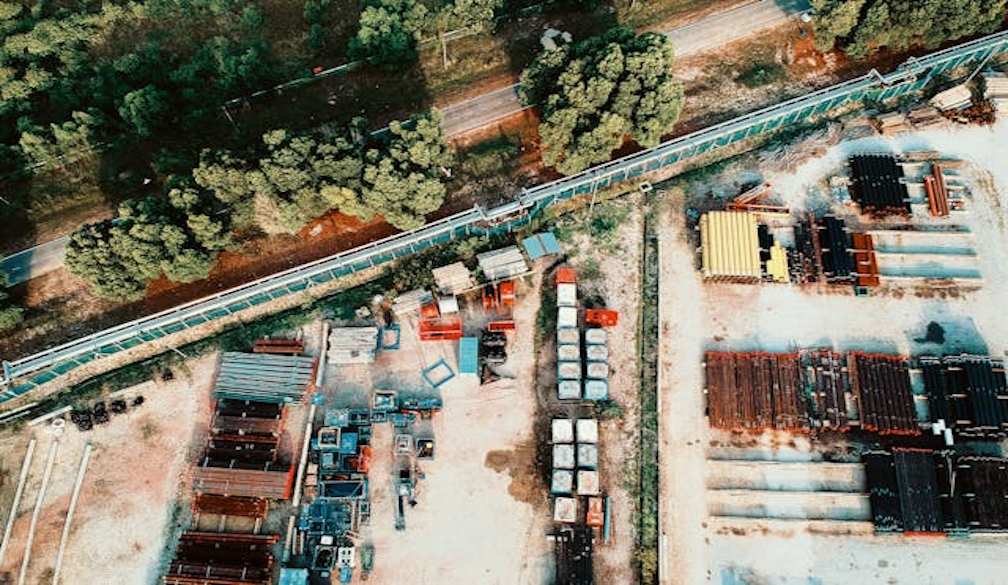Best Practices for Managing High-Volume Material Movement in Industrial Settings

If there is one thing that is the backbone of a large industry, that’s undoubtedly the ideal management of material movement. For any high-volume industry, handling materials is of great importance. When large volumes of materials need to move across warehouses, production lines, or shipping areas, even small inefficiencies can lead to delays, safety risks, and increased costs. That is why it is important to know and follow best practices for high-volume material handling to ensure operations stay smooth, timely, and safe, while optimising resources and reducing waste. Read on to discover what they are.
Understand the material flow
Before making any changes, you should map out how materials move through your facility. Track each stage, from receiving raw materials to shipping finished products. Also, if you were to understand bottlenecks, redundancies, or underused pathways, any worker or manager can make informed decisions. Detailed flow charts, software simulations, or simple observation periods, for example, can help reveal inefficiencies that are often invisible at first glance, and so on.
Standardise handling processes
Consistency might as well be the key in high-volume operations. Standard operating procedures should define how employees move, store and handle materials at each step. Hence, all workers should follow clear protocols for lifting, transporting, and placing items. This will surely reduce human error, improve speed, and minimise damage to materials. Also, it would be a must to use visual aids, signage, and clear labelling to ensure everyone in the facility knows the correct procedures, even in fast-paced or high-pressure environments.
Invest in the right equipment
High-volume material movement demands equipment that matches the scale and type of operation. Forklifts, conveyor belts, pallet jacks, automated guided vehicles, and overhead cranes all play a role in different contexts. Choosing the right equipment involves assessing load capacity, speed, maneuverability, and compatibility with existing infrastructure. Investing in high-quality conveyor products and solutions, for example, ensures smooth, reliable transport of materials across the facility. Let's not forget about the maintenance of such equipment and machinery. Regular maintenance is equally important, as equipment breakdowns in high-volume settings can cause significant delays.
Optimise layout and storage
The physical layout of a facility significantly affects material flow. Managing high-volume material movement in a large industrial setting takes patience and diligence; hence, smart storing is vital. Storing frequently used materials closer to production lines or shipping docks can significantly help reduce unnecessary movement. Plus, organising materials by size, weight, or processing order can cut handling time and minimise congestion. If that is too demanding, adapting some small adjustments, such as repositioning racks or adding guide rails for forklifts, lead to measurable efficiency gains.
Try smart automation strategically
Automation can drastically improve material handling efficiency, especially in high-volume environments. Things like conveyor systems, robotic arms, and automated sorting equipment reduce manual labour while at the same time helping maintain speed and accuracy. Automation works best when employees observe the process, in that way, you can ensure there are no unexpected issues. Try perhaps smart data-driven automation systems to track inventory in real time, trigger reorders, and optimise routing.
Focus on worker safety
High-volume material movement carries inherent risks. Workers frequently interact with heavy loads, moving machinery, and potentially hazardous materials. Everyone should go through safety protocols, always wear personal protective equipment (PPE), add clear signage, and do whatever is necessary to protect employees from injuries. Regular safety training reinforces good practice. Safe workplaces keep people on the right track, boost performance, and reduce downtime caused by accidents.
Encourage team collaboration
High-volume material movement is rarely the responsibility of a single department. Enabling solid coordination between warehouse staff, production teams, and logistics planners is essential. Regular communication is of utmost importance. This will ensure that everyone understands priorities, schedules, and potential obstacles. What's more, cross-functional meetings or digital collaboration tools can also be useful because they can aid in preventing misunderstandings and delays, etc.
Plan for scalability and flexibility
Industrial operations are rarely static. Demand spikes, new product lines, or seasonal variations can, unfortunately, strain material movement systems. For that matter, planning for scalability ensures that the facility can handle higher volumes without sacrificing efficiency. Flexible processes, adjustable equipment, and modular layouts allow operations to adapt quickly to changing conditions. Preparing contingency plans for equipment downtime, staffing shortages, or supply delays ensures that operations remain resilient even under pressure.
Safe than sorry
All in all, managing high-volume material movement in industrial settings requires a combination of planning, technology, and human expertise. By understanding material flow, standardising procedures, investing in the right equipment, and prioritising worker safety, companies can create efficient, reliable operations.





